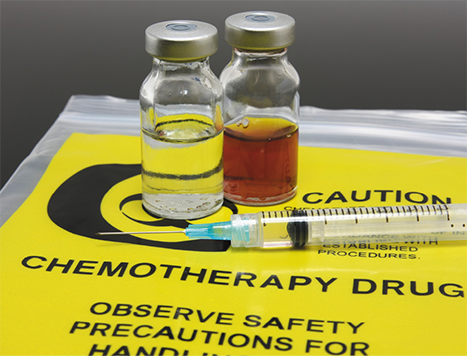3.2 Classifications for Drugs
Today’s drugs are used not only to treat and cure illnesses, but also to aid in their diagnosis and even prevent or delay their onset. Because medications serve a variety of purposes in a patient’s healthcare regimen, pharmacy technicians must be knowledgeable about the intended functions of commonly used medications; this knowledge can help them to recognize when something seems amiss in a prescription order. Medications are used for therapeutic, prophylactic, destructive, pharmacodynamic, and diagnostic purposes.
Therapeutic Agents
A therapeutic agent is a medication that targets a specific need in the body. Therapeutic agents are categorized according to the following functions:
Maintain Health
These prescription and OTC drugs as well as supplements of vitamins and minerals provide mild beneficial effects, support regular organ and cell functions, and help to regulate metabolism, or otherwise contribute to the maintenance of normal growth and functioning of the body. Specific examples include the use of the herbal supplement melatonin to help facilitate sleep or the use of baby aspirin to control clotting in patients at risk for a heart attack.
 Put Down Roots
Put Down Roots
Therapeutic comes from the Greek word therapeutikos, to minister to or treat medically
Relieve Symptoms
Examples of these medications include anti-inflammatory drugs, such as naproxen, used to treat fever, pain, or inflammation; narcotics to treat and prevent severe pain in terminally ill patients with cancer; and diuretics or water tablets to control excess fluid or control high blood pressure.
Combat Illness
These medications include, for example, antibiotics to treat pneumonia, strep throat, or infections of the bladder or ear. Although antiviral medications do not cure HIV/AIDS, they may allow the immune system to remain sufficiently intact so as to delay disease progression. Drugs for Alzheimer’s disease will not cure the patient, but they may delay both disease progression and loss of independence of the patient.

Many pharmacists administer flu, pneumonia, and shingles vaccines to prevent diseases.
Reverse Disease Processes
These medications work to halt the decline of health and then improve bodily and mental processes; they include drugs that address depression, blood pressure, or cholesterol levels.
 Put Down Roots
Put Down Roots
Prophylactic comes from the Greek pro, which means “before” or “in front of,” and phulsasin, which means “to guard.”
Prophylactic Agents
A prophylactic agent prevents illness or disease from occurring. Examples of prophylactic agents include the antiseptic and germicidal (germ-fighting) liquid chemicals used for preoperative hand washing procedures. Vaccines are used to prevent the onset of diseases, such as influenza (flu), pneumonia, shingles, tetanus, measles, mumps, rubella, chicken pox, poliomyelitis, meningitis, and hepatitis. Pharmacists are becoming increasingly involved in the administration of the influenza, pneumonia, shingles, and other vaccines to older adults and other high-risk individuals.
In certain situations, antibiotics (drugs to fight the growth of microorganisms) are prophylactic agents as well. For example, a patient who has a history of rheumatic fever may be given a large single dose of an antibiotic one hour prior to a dental procedure, or hunters going into areas infested with deer ticks may be prescribed antibiotics. This preventive action decreases the patient’s risk for acquiring a serious bacterial infection.
Destructive Agents
A destructive agent works to kill specific living elements, such as bacteria, fungi, viruses, or abnormal cancer cells. Many antibiotics, especially those given in high doses and/or as intravenous (IV) infusions, are bactericidal agents, meaning that they kill rather than inhibit bacteria that are sensitive to these drugs. Penicillin is an example of a bactericidal drug (though resistance by some bacterial organisms has developed over the years). Another example of a destructive agent is radioactive iodine, which is used to destroy thyroid cells to reduce excess hormone secreted by the thyroid gland.

Traditional cancer drugs are destructive agents that kill both cancer and normal cells. Newer therapies are more selective.
Different antineoplastic drugs are used in combination to slow the growth of cancer cells at different phases of their cell growth cycles. Unfortunately, most of these drugs cannot effectively distinguish cancer cells from normal cells, so side effects often include hair loss, depression of the immune system, and ulcerations of the mouth or gastrointestinal (GI) tract. As cancer treatments have become more finely targeted, side effects have become somewhat less intense and long-lasting.
 Put Down Roots
Put Down Roots
Pharmacodynamic comes from the Greek words pharmakon, drug, and dynamic, force or power.
Pharmacodynamic Agents
A pharmacodynamic agent is a medication that alters body functioning in a desired way. Pharmacodynamic agents can be used, for example, to stimulate or relax muscles, to dilate or constrict pupils, or to increase or decrease blood glucose levels. The caffeine found in coffee, tea, or a soft drink is considered a pharmacodynamic agent because it stimulates the nervous system, allowing the consumer to remain alert.

Caffeine is an example of a pharmacodynamic agent that can increase alertness.
Other examples of these medications include decongestants for nasal stuffiness, oral contraceptives that depress hormones to prevent pregnancy, expectorants to thin fluid or loosen mucus in the respiratory tract, anesthetics to cause numbness or loss of consciousness, glucagon to increase blood glucose levels in patients with diabetes, and digoxin to increase heart muscle contraction or slow heart conduction in patients with heart disease.
 Put Down Roots
Put Down Roots
Diagnostic comes from the Greek word diagnostikos, meaning “to distinguish.”
Diagnostic Agents
A diagnostic agent is a substance that helps healthcare providers diagnose a medical condition. These can be dyes or chemicals containing radioactive elements that are used to help healthcare professionals visualize or track the state or actions of cells, organs, and systems. Unstable radioactive elements give off energy in the form of radiation. These agents act as tracers, helping healthcare practitioners pinpoint, diagnose, and treat certain disorders. They are commonly used for imaging and functional studies of the brain, thyroid, lungs, liver, gallbladder, kidneys, and blood. The radiation exposure from the single use of an irradiated tracer is minimal.